A Bayesian Approach to Predict Blast-Induced Damage of High Rock Slope Using Vibration and Sonic Data
Abstract
1. Introduction
2. Relationship between Blast-Induced Damage and Natural Frequency
2.1. Blast-Induced Damage
2.2. Natural Frequency of Rock Mass
2.3. Relationship between Damage Depth and Natural Frequency
3. Bayesian Approach to Predict Blast-Induced Damage
3.1. Bayesian Linear Regression
3.2. Relationship between Damage Depth and Natural Frequency
4. Blasting and Measurement Operations at the Baihetan Hydropower Station
4.1. Engineering Background
4.2. Damage Depth Measurement
4.3. Blasting Vibration Monitoring
5. Results and Discussion
5.1. Damage Depth and Change in Natural Frequency
5.2. Predicted Results of Damage Depth
6. Conclusions
Author Contributions
Funding
Institutional Review Board Statement
Informed Consent Statement
Data Availability Statement
Acknowledgments
Conflicts of Interest
References
- Deng, K.; Chen, M. Blasting excavation and stability control technology for ultra-high steep rock slope of hydropower engineering in China: A review. Eur. J. Remote Sens. 2020, 1–15. [Google Scholar] [CrossRef]
- He, M.C.; Feng, J.L.; Sun, X.M. Stability evaluation and optimal excavated design of rock slope at Antaibao open pit coal mine, China. Int. J. Rock Mech. Min. Sci. 2008, 45, 289–302. [Google Scholar] [CrossRef]
- Li, H.B.; Xia, X.; Li, J.C.; Zhao, J.; Liu, B.; Liu, Y.Q. Rock damage control in bedrock blasting excavation for a nuclear power plant. Int. J. Rock Mech. Min. Sci. 2011, 48, 210–218. [Google Scholar] [CrossRef]
- Wyllie, D.C. Rock Slope Engineering: Civil. Applications, 5th ed.; CRC Press: Boca Raton, FL, USA, 2017. [Google Scholar]
- Persson, P.-A.; Holmberg, R.; Lee, J. Rock Blasting and Explosives Engineering; CPC Press: Boca Raton, FL, USA, 1994. [Google Scholar]
- Silva, J.; Worsey, T.; Lusk, B. Practical assessment of rock damage due to blasting. Int. J. Min. Sci. Technol. 2019, 29, 379–385. [Google Scholar] [CrossRef]
- Singh, P.K.; Roy, M.P. Damage to surface structures due to blast vibration. Int. J. Rock Mech. Min. Sci. 2010, 47, 949–961. [Google Scholar] [CrossRef]
- Lemaitre, J.; Dufailly, J. Damage measurements. Eng. Fract. Mech. 1987, 28, 643–661. [Google Scholar] [CrossRef]
- Xie, H.P. Tensile failure of local damage of rock material. Chin. J. Rock Mech. Eng. 1988, 7, 147–154. [Google Scholar]
- Lindqvist, P.-A.; Lai, H.H.; Alm, O. Indentation fracture development in rock continuously observed with a scanning electron microscope. Int. J. Rock Mech. Min. Sci. Geomech. Abstr. 1984, 21, 165–182. [Google Scholar] [CrossRef]
- Qin, Z.; Fu, H.L.; Chen, X.X. A study on altered granite meso-damage mechanisms due to water invasion-water loss cycles. Environ. Earth Sci. 2019, 78, 428. [Google Scholar] [CrossRef]
- Stead, D.; Donati, D.; Wolter, A.; Sturzenegger, M. Application of remote sensing to the investigation of rock slopes: Experience gained and lessons learned. ISPRS Int. J. Geo-Inf. 2019, 8, 296. [Google Scholar] [CrossRef]
- Donati, D.; Stead, D.; Brideau, M.-A.; Ghirotti, M. Using pre-failure and post-failure remote sensing data to constrain the three-dimensional numerical model of a large rock slope failure. Landslides 2020. [Google Scholar] [CrossRef]
- Bae, D.S.; Kim, K.S.; Koh, Y.K.; Kim, J.Y. Characterization of joint roughness in granite by applying the scan circle technique to images from a borehole televiewer. Rock Mech. Rock Eng. 2011, 44, 497–504. [Google Scholar] [CrossRef]
- Li, S.J.; Feng, X.T.; Wang, C.Y.; Hudson, J.A. ISRM suggested method for rock fractures observations using a borehole digital optical televiewer. Rock Mech. Rock Eng. 2012, 46, 635–644. [Google Scholar] [CrossRef]
- Feng, X.T.; Chen, S.L.; Zhou, H. Real-time computerized tomography (CT) experiments on sandstone damage evolution during triaxial compression with chemical corrosion. Int. J. Rock Mech. Min. Sci. 2004, 41, 181–192. [Google Scholar] [CrossRef]
- Nasseri, M.H.B.; Rezanezhad, F.; Young, R.P. Analysis of fracture damage zone in anisotropic granitic rock using 3D X-ray CT scanning techniques. Int. J. Fract. 2010, 168, 1–13. [Google Scholar] [CrossRef]
- Kim, J.S.; Lee, K.S.; Cho, W.J.; Choi, H.J.; Cho, G.C. A comparative evaluation of stress-strain and acoustic emission methods for quantitative damage assessments of brittle rock. Rock Mech. Rock Eng. 2014, 48, 495–508. [Google Scholar] [CrossRef]
- Yang, J.H.; Dai, J.H.; Yao, C.; Jiang, S.H.; Zhou, C.B.; Jiang, Q.H. Estimation of rock mass properties in excavation damage zones of rock slopes based on the Hoek-Brown criterion and acoustic testing. Int. J. Rock Mech. Min. Sci. 2020, 126, 104192. [Google Scholar] [CrossRef]
- Lu, W.B.; Hu, Y.G.; Yang, J.H.; Chen, M.; Yan, P. Spatial distribution of excavation induced damage zone of high rock slope. Int. J. Rock Mech. Min. Sci. 2013, 64, 181–191. [Google Scholar] [CrossRef]
- Grasmueck, M. 3-D ground-penetrating radar applied to fracture imaging in gneiss. Geophysics 1996, 61, 1050–1064. [Google Scholar] [CrossRef]
- Walton, G.; Lato, M.; Anschütz, H.; Perras, M.A.; Diederichs, M.S. Non-invasive detection of fractures, fracture zones, and rock damage in a hard rock excavation—Experience from the Äspö Hard Rock Laboratory in Sweden. Eng. Geol. 2015, 196, 210–221. [Google Scholar] [CrossRef]
- Xu, N.W.; Dai, F.; Liang, Z.Z.; Zhou, Z.; Sha, C.; Tang, C.A. The dynamic evaluation of rock slope stability considering the effects of microseismic damage. Rock Mech. Rock Eng. 2013, 47, 621–642. [Google Scholar] [CrossRef]
- Salvoni, M.; Dight, P.M. Rock damage assessment in a large unstable slope from microseismic monitoring—MMG Century mine (Queensland, Australia) case study. Eng. Geol. 2016, 210, 45–56. [Google Scholar] [CrossRef]
- Luong, M.P. Infrared thermovision of damage processes in concrete and rock. Eng. Fract. Mech. 1990, 35, 291–301. [Google Scholar] [CrossRef]
- Zhao, Y.X.; Jiang, Y.D. Acoustic emission and thermal infrared precursors associated with bump-prone coal failure. Int. J. Coal Geol. 2010, 83, 11–20. [Google Scholar] [CrossRef]
- Pham, Q.Q.; Dang, N.L.; Kim, J.T. Piezoelectric sensor-embedded smart rock for damage monitoring in a prestressed anchorage zone. Sensors 2021, 21, 353. [Google Scholar] [CrossRef]
- Chen, G.Y.; Lin, Y.M. Stress-strain-electrical resistance effects and associated state equations for uniaxial rock compression. Int. J. Rock Mech. Min. Sci. 2004, 41, 223–236. [Google Scholar] [CrossRef]
- Holmberg, R.; Persson, P.A. The Swedish approach to contour blasting. In Proceedings of the 4th Conference on Explosives and Blasting Technique: Annual Meeting, New Orleans, LA, USA, 1–3 February 1978; Konya, C.J., Ed.; International Society of Explosives Engineers: Cleveland, OH, USA, 1978; pp. 113–127. [Google Scholar]
- Hustrulid, W.A.; Lu, W.B. Some general concepts regarding the control of blast induced damage during rock slope excavation. In Proceedings of the 7th International Symposium on Rock Fragmentation by Blasting, Beijing, China, 11–15 August 2002; Wang, X.G., Ed.; Metallurgical Industry Press: Beijing, China, 2002; pp. 595–604. [Google Scholar]
- Smith, A.A. A Modified Holmberg-Persson Approach to Predict Blast Damage. Ph.D. Thesis, University of Utah, Salt Lake City, UT, USA, 2003. [Google Scholar]
- Stephen, I.; Kerkering, C.; Hustrulid, W.A. Application of the NIOSH-modified Holmberg-Persson approach to perimeter blast design. In Proceedings of the 34th Annual Conference on Explosives and Blasting Technique, New Orleans, LA, USA, 27–30 January 2008; International Society of Explosives Engineers: Cleveland, OH, USA, 2008; pp. 1–33. [Google Scholar]
- Fleetwood, K.G.; Villaescusa, E.; Li, J.P. Limitations of using PPV damage models to predict rock mass damage. In Proceedings of the 35th Annual Conference on Explosives and Blasting Technique, Denver, CO, USA, 8–11 February 2009; International Society of Explosves Engineers: Cleveland, OH, USA, 2009; pp. 1–15. [Google Scholar]
- Khandelwal, M.; Singh, T.N. Prediction of blast-induced ground vibration using artificial neural network. Int. J. Rock Mech. Min. Sci. 2009, 46, 1214–1222. [Google Scholar] [CrossRef]
- Jang, H.; Topal, E. A review of soft computing technology applications in several mining problems. Appl. Soft Comput. 2014, 22, 638–651. [Google Scholar] [CrossRef]
- Sheykhi, H.; Bagherpour, R.; Ghasemi, E.; Kalhori, H. Forecasting ground vibration due to rock blasting: A hybrid intelligent approach using support vector regression and fuzzy C-means clustering. Eng. Comput. 2017, 34, 357–365. [Google Scholar] [CrossRef]
- Song, D.Q.; Che, A.L.; Zhu, R.J.; Ge, X.R. Natural frequency characteristics of rock masses containing a complex geological structure and their effects on the dynamic stability of slopes. Rock Mech. Rock Eng. 2019, 52, 4457–4473. [Google Scholar] [CrossRef]
- Jia, B.N.; Wu, Z.X.; Du, Y. Real-time stability assessment of unstable rocks based on fundamental natural frequency. Int. J. Rock Mech. Min. Sci. 2019, 124, 104134. [Google Scholar] [CrossRef]
- Starr, A.M.; Moore, J.R.; Thorne, M.S. Ambient resonance of Mesa Arch, Canyonlands National Park, Utah. Geophys. Res. Lett. 2015, 42, 6696–6702. [Google Scholar] [CrossRef]
- Burjánek, J.; Gischig, V.; Moore, J.R.; Fäh, D. Ambient vibration characterization and monitoring of a rock slope close to collapse. Geophys. J. Int. 2018, 212, 297–310. [Google Scholar] [CrossRef]
- Li, L.Q.; Ju, N.P.; Zhang, S.; Deng, X.X.; Sheng, D.C. Seismic wave propagation characteristic and its effects on the failure of steep jointed anti-dip rock slope. Landslides 2018, 16, 105–123. [Google Scholar] [CrossRef]
- Niu, J.Y.; Jiang, X.L.; Yang, H.; Wang, F.F. Seismic response characteristics of a rock slope with small spacing tunnel using a large-scale shaking table. Geotech. Geol. Eng. 2018, 36, 2707–2723. [Google Scholar] [CrossRef]
- Häusler, M.; Michel, C.; Burjánek, J.; Fäh, D. Fracture network imaging on rock slope instabilities using resonance mode analysis. Geophys. Res. Lett. 2019, 46, 6497–6506. [Google Scholar] [CrossRef]
- Bottelin, P.; Lévy, C.; Baillet, L.; Jongmans, D.; Guéguen, P. Modal and thermal analysis of Les Arches unstable rock column (Vercors massif, French Alps). Geophys. J. Int. 2013, 194, 849–858. [Google Scholar] [CrossRef]
- Burjánek, J.; Gassner-Stamm, G.; Poggi, V.; Moore, J.R.; Fäh, D. Ambient vibration analysis of an unstable mountain slope. Geophys. J. Int. 2010, 180, 820–828. [Google Scholar] [CrossRef]
- Maresca, R.; Nardone, L.; Gizzi, F.T.; Potenza, M.R. Ambient noise HVSR measurements in the Avellino historical centre and surrounding area (southern Italy). Correlation with surface geology and damage caused by the 1980 Irpinia-Basilicata earthquake. Measurement 2018, 130, 211–222. [Google Scholar] [CrossRef]
- Geimer, P.R.; Finnegan, R.; Moore, J.R. Sparse ambient resonance measurements reveal dynamic properties of freestanding rock arches. Geophys. Res. Lett. 2020, 47, e2020GL087239. [Google Scholar] [CrossRef]
- Hassiotis, S.; Jeong, G.D. Assessment of structural damage from natural frequency measurements. Comput. Struct. 1993, 49, 679–691. [Google Scholar] [CrossRef]
- Salawu, O.S. Detection of structural damage through changes in frequency: A review. Eng. Struct. 1997, 19, 718–723. [Google Scholar] [CrossRef]
- Liang, Y.B.; Li, D.S.; Song, G.B.; Feng, Q. Frequency co-integration-based damage detection for bridges under the influence of environmental temperature variation. Measurement 2018, 125, 163–175. [Google Scholar] [CrossRef]
- Rocchetta, R.; Broggi, M.; Huchet, Q.; Patelli, E. Online Bayesian model updating for structural health monitoring. Mech. Syst. Signal. Proc. 2018, 103, 174–195. [Google Scholar] [CrossRef]
- Lam, H.F.; Zhang, F.L.; Ni, Y.C.; Hu, J. Operational modal identification of a boat-shaped building by a Bayesian approach. Eng. Struct. 2017, 138, 381–393. [Google Scholar] [CrossRef]
- Hustrulid, W. Blasting Principles for Open Pit Mining: Theoretical Foundations; A.A. Balkema: Rotterdam, The Netherlands, 1999. [Google Scholar]
- Kong, D.D.; Zhu, J.J.; Duan, C.Q.; Lu, L.X.; Chen, D.X. Bayesian linear regression for surface roughness prediction. Mech. Syst. Signal. Proc. 2020, 142, 106770. [Google Scholar] [CrossRef]
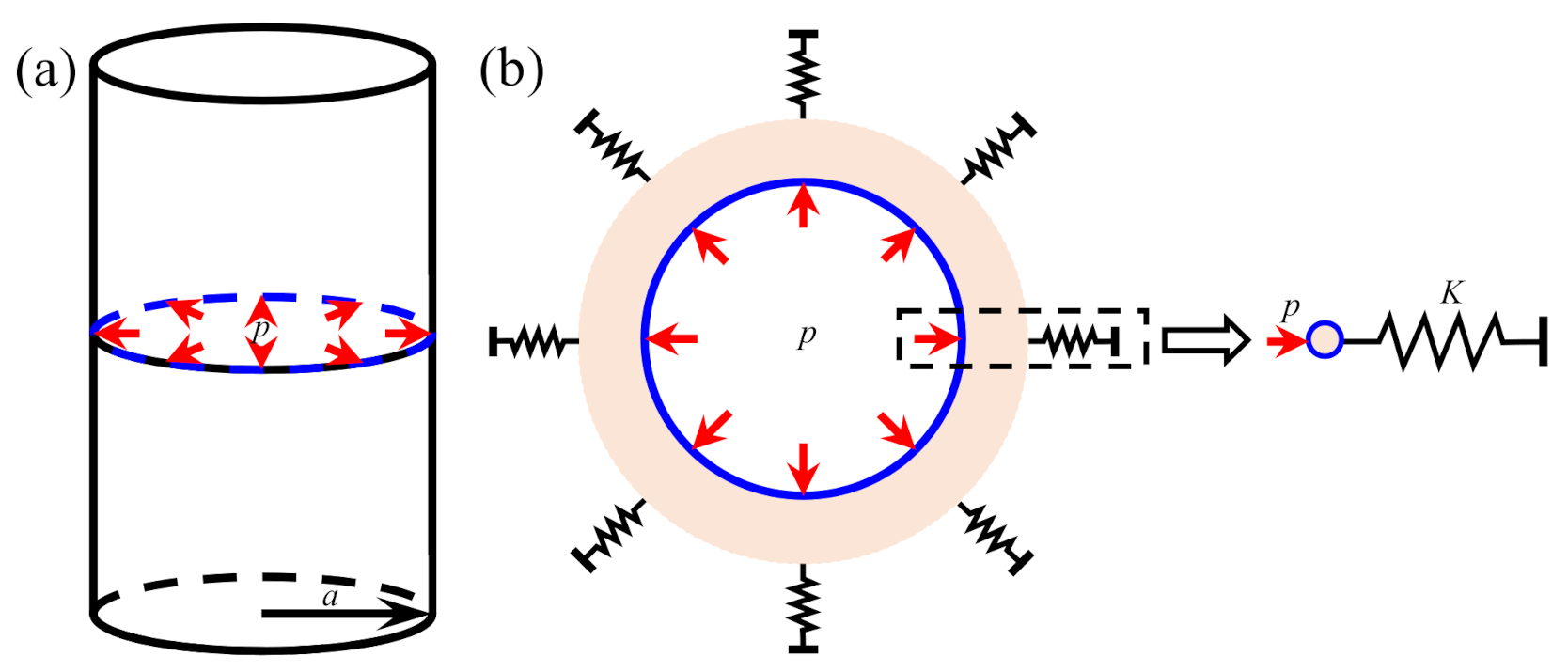

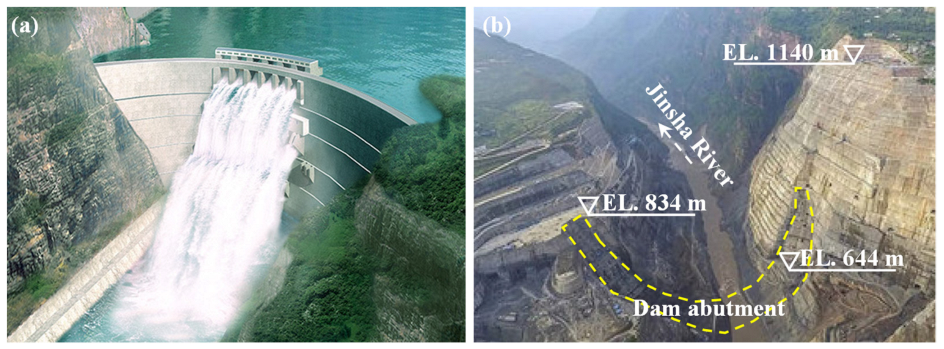









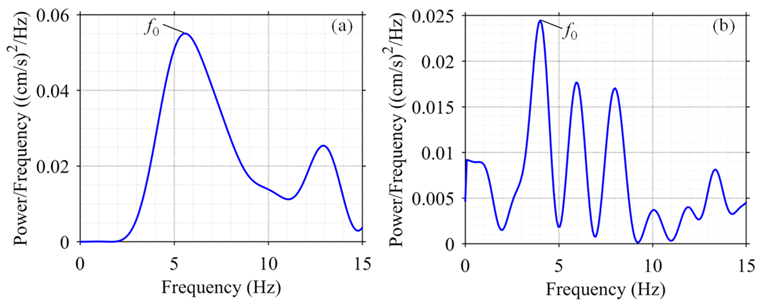
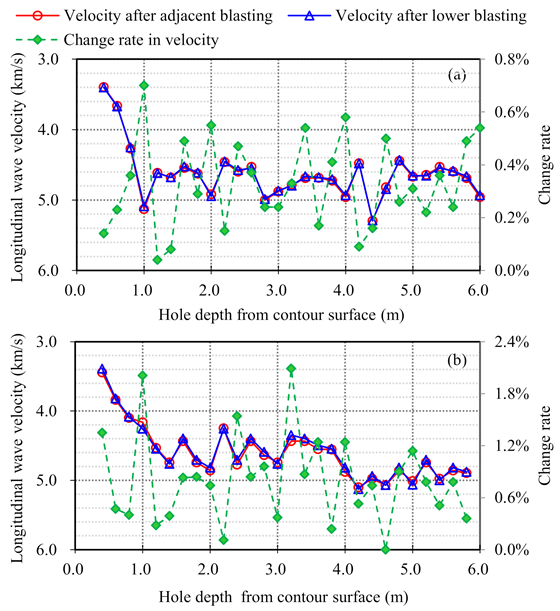

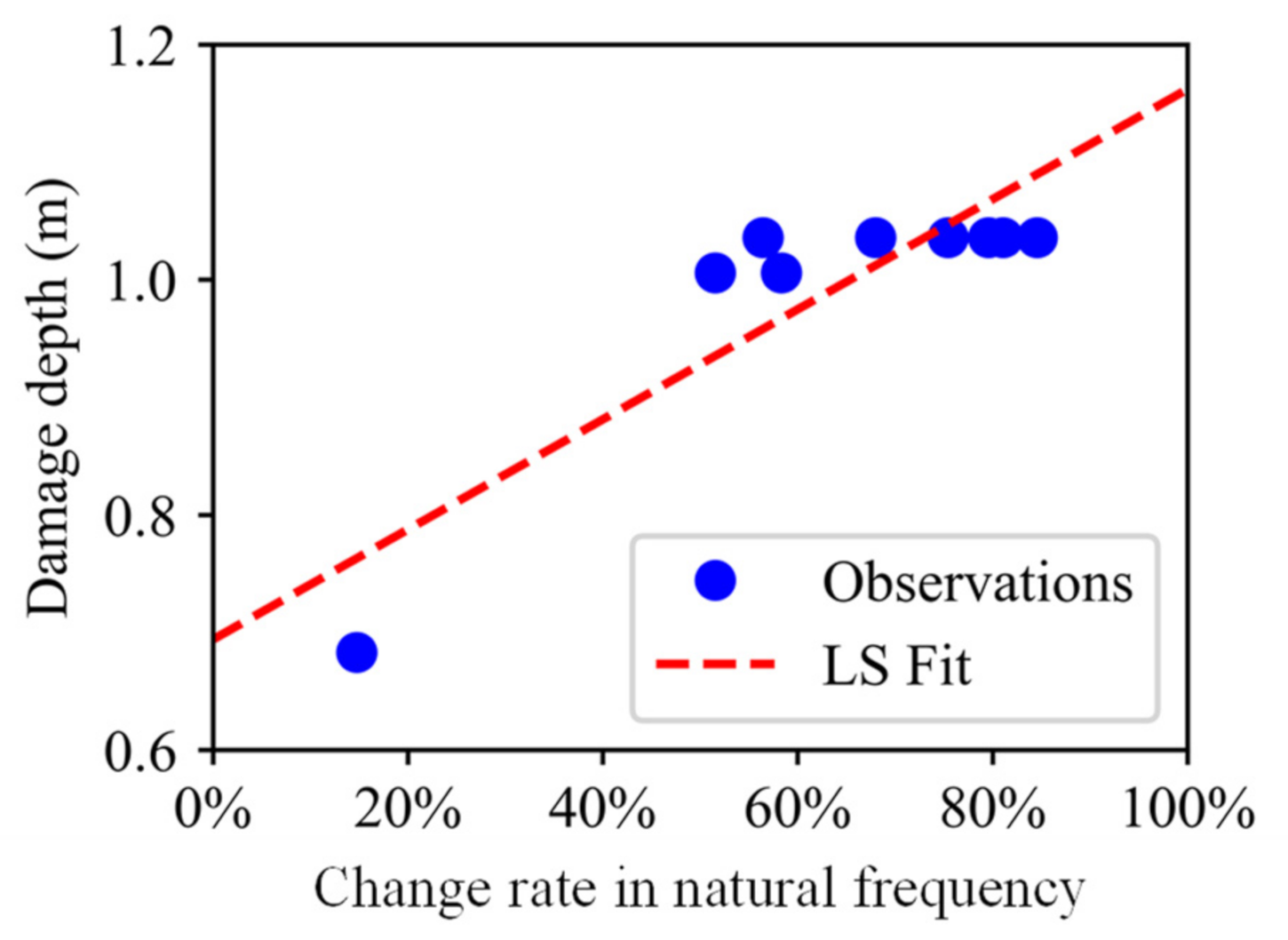
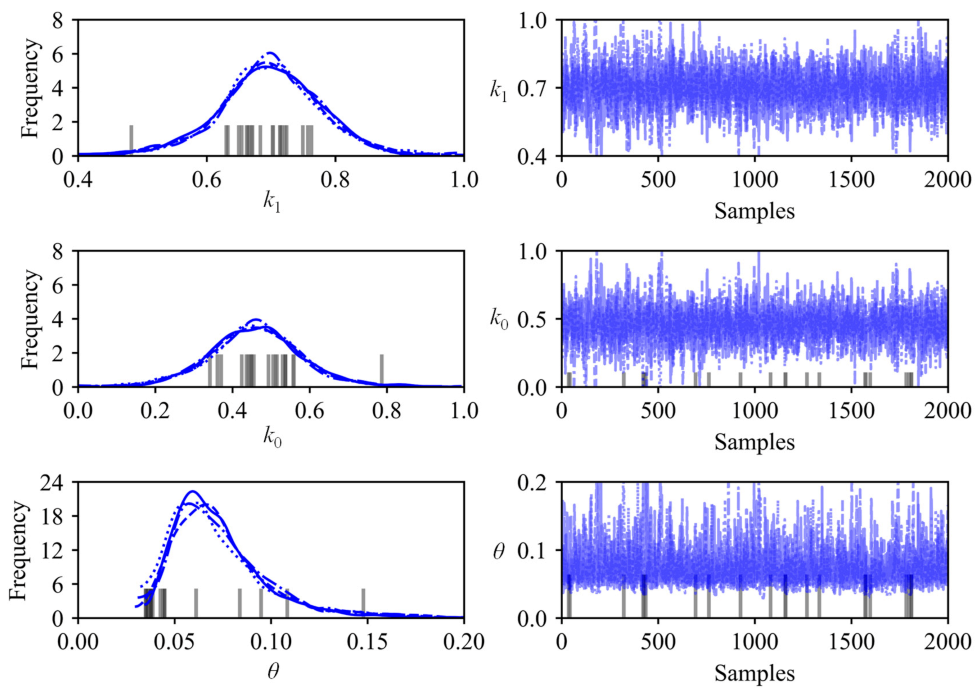
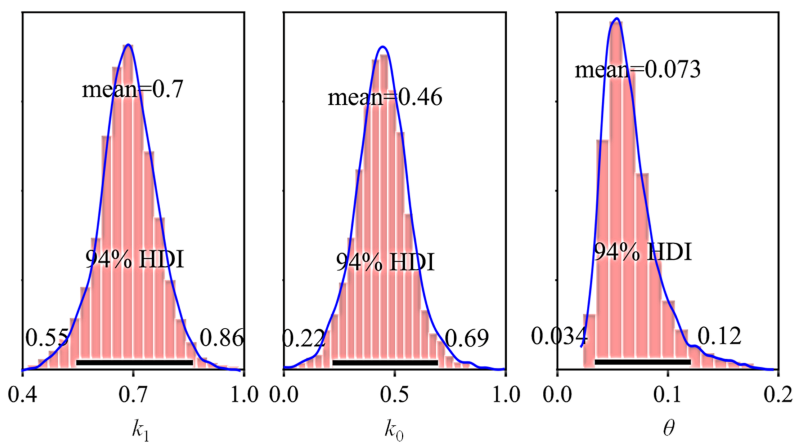
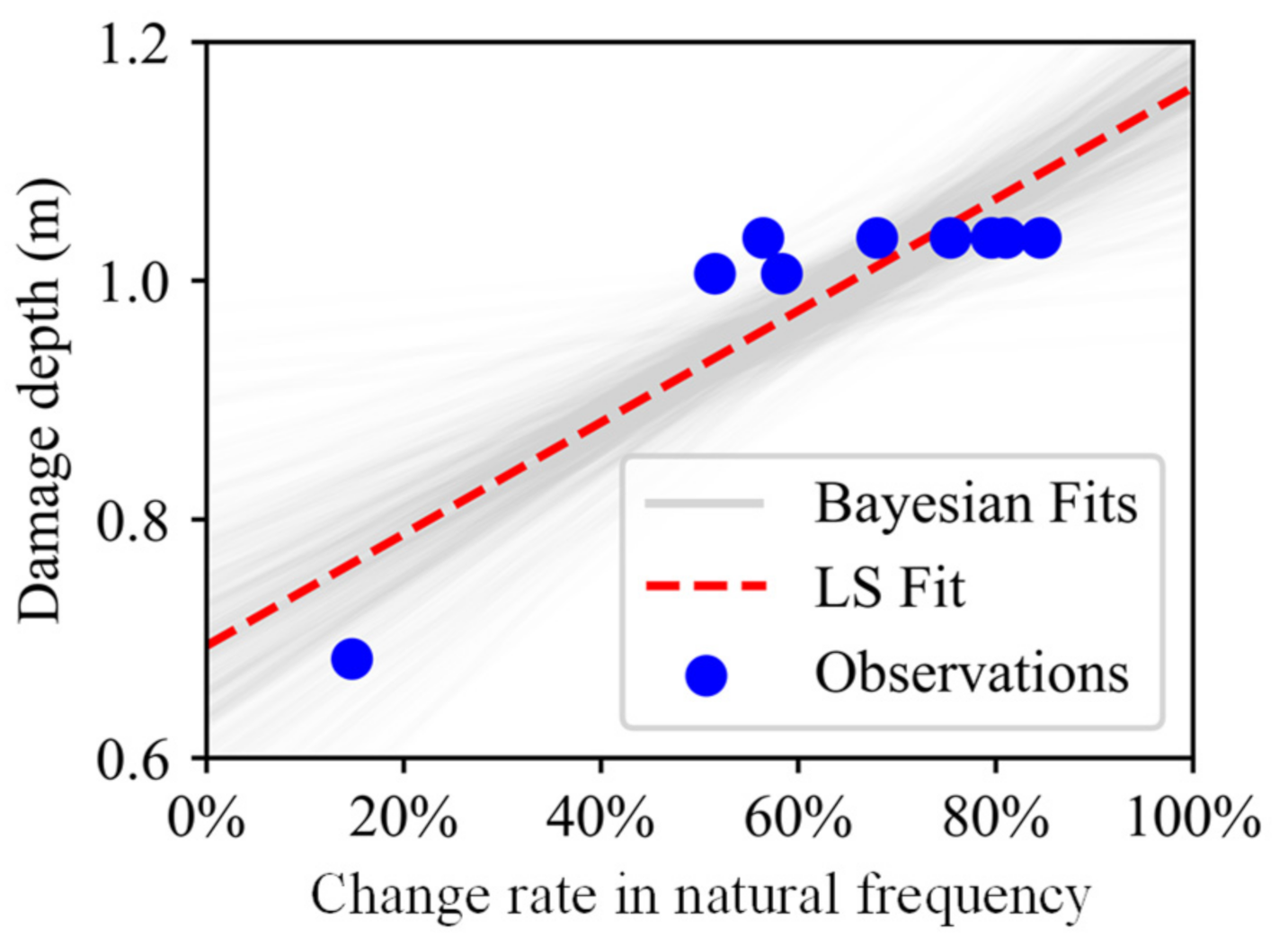
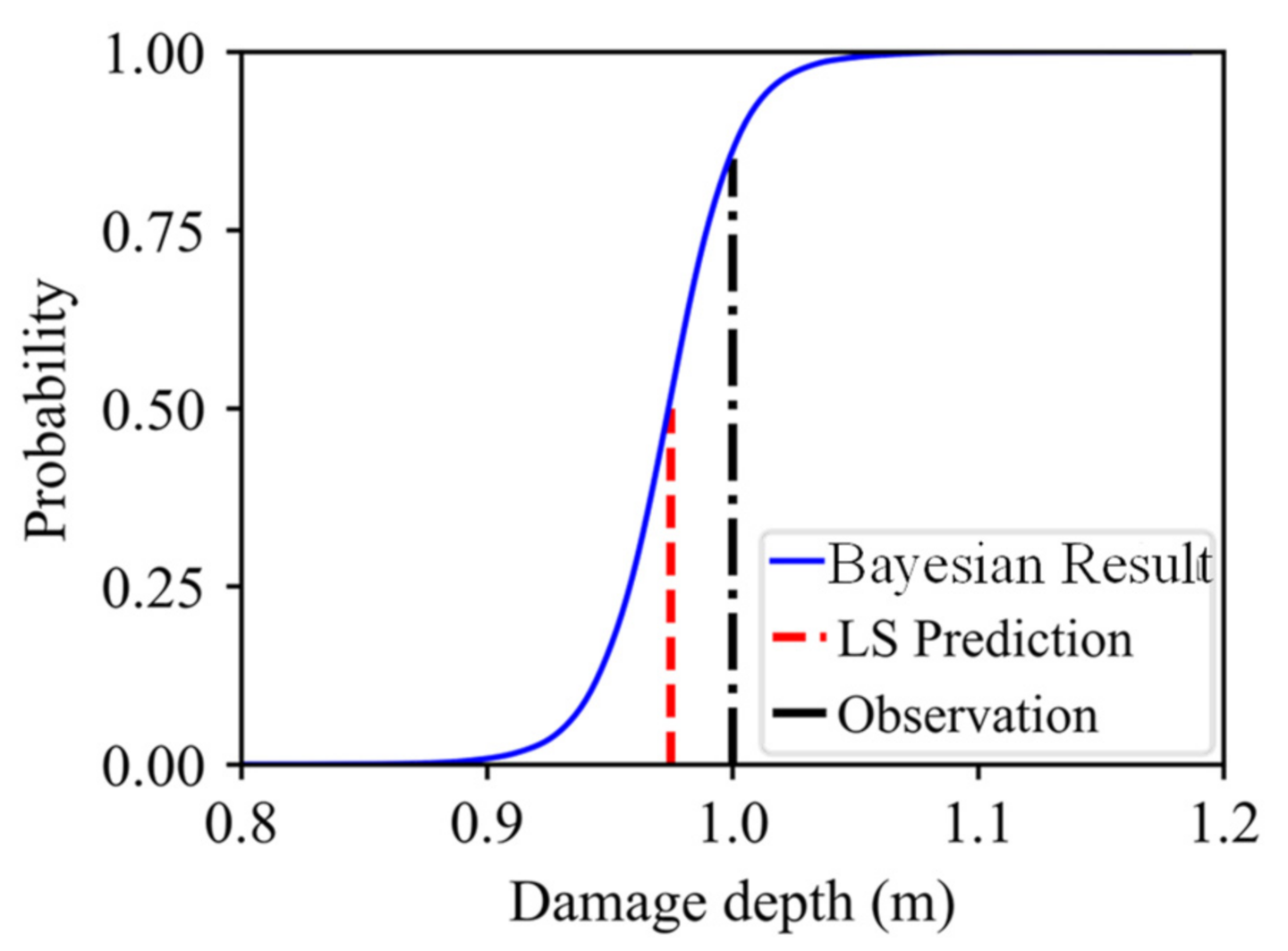


| Blasthole | Blasthole Parameter | Charge Parameter | |||||
|---|---|---|---|---|---|---|---|
| Diameter (mm) | Length (m) | Spacing (m) | Burden (m) | Diameter (mm) | Stemming (m) | Weight per Blasthole (kg) | |
| Presplit hole | 90 | 10.4~11.2 | 0.8 | / | 32 | 1.0 | 5.2~7.4 |
| Buffer blasthole | 105 | 10.4~11.2 | 1.9 | 1.4 | 70 | 3.0 | 34~42 |
| Production blasthole | 105 | 9.8~12.4 | 5.0 | 3.0 | 90 | 3.0 | 50~64 |
Publisher’s Note: MDPI stays neutral with regard to jurisdictional claims in published maps and institutional affiliations. |
© 2021 by the authors. Licensee MDPI, Basel, Switzerland. This article is an open access article distributed under the terms and conditions of the Creative Commons Attribution (CC BY) license (https://creativecommons.org/licenses/by/4.0/).
Share and Cite
Sun, P.; Lu, W.; Hu, H.; Zhang, Y.; Chen, M.; Yan, P. A Bayesian Approach to Predict Blast-Induced Damage of High Rock Slope Using Vibration and Sonic Data. Sensors 2021, 21, 2473. https://doi.org/10.3390/s21072473
Sun P, Lu W, Hu H, Zhang Y, Chen M, Yan P. A Bayesian Approach to Predict Blast-Induced Damage of High Rock Slope Using Vibration and Sonic Data. Sensors. 2021; 21(7):2473. https://doi.org/10.3390/s21072473
Chicago/Turabian StyleSun, Pengchang, Wenbo Lu, Haoran Hu, Yuzhu Zhang, Ming Chen, and Peng Yan. 2021. "A Bayesian Approach to Predict Blast-Induced Damage of High Rock Slope Using Vibration and Sonic Data" Sensors 21, no. 7: 2473. https://doi.org/10.3390/s21072473
APA StyleSun, P., Lu, W., Hu, H., Zhang, Y., Chen, M., & Yan, P. (2021). A Bayesian Approach to Predict Blast-Induced Damage of High Rock Slope Using Vibration and Sonic Data. Sensors, 21(7), 2473. https://doi.org/10.3390/s21072473






